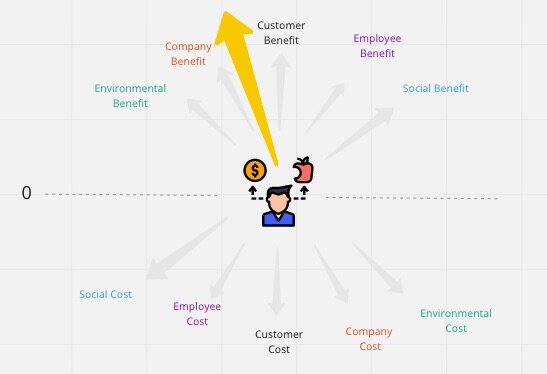When You’re Up to your ass in Alligators
Most teams use some sort of defect management tool which allows them (and other interested parties) to record defects along with meta-data about the defect such as severity and priority. Severity is usually an objective value but priority is subjective. For instance, severity is usually defined in terms like 'High - Results in crash or data loss', 'Medium - Work around available', or 'Low - Cosmetic' etc. High severity defects are sometimes low priority and sometimes low severity defects are high priority. For instance, the misspelling of a company name may be low severity but high priority while an application crash generated from a situation that is unlikely to be encountered by the customer may be low priority due to a cost/benefit assessment. Team members can assign severity but usually only a Product Owner is responsible for assessing the value of addressing (or not) a defect. This is because usually those people who are responsible for fixing defects are the same as those responsible for adding value via new functionality. Product Owners need to be able to prioritize the value of fixing a defect against adding new functionality.
When your team is faced with 'draining the swamp' of legacy defects, they must face the need for effective defect prioritization. The first step in addressing this issue is assessing whether the 'defects' are indeed defects (functionality that does not behave as previously agreed upon by all involved parties) or enhancements (behaviour that has not yet been designed/implemented/tested). In my view, if the team did not agree that some behaviour was expected, designed, implemented and tested, the behaviour is an enhancement to the current functionality. Once the enhancements have been distinguished from the true defects, those enhancements can be turned into Stories and prioritized just like any other Story which adds value to the application. The remaining defects then need to be prioritized in terms of the value they prevent the application from maintaining. Something of value used to work properly and now does not do so. How important is that to the success criteria of the product and/or release?
In order to mitigate risk on a software development project, one of the principles of Scrum is that teams try to focus on delivering the next most valuable functionality while keeping the product potentially shippable. We are to work on the next most valuable functionality in order to insure that if we run out of money or time (and we will) that we have created the most value for the money and time expended. This should apply in the world of defects as well as enhancements. Often the difficulty with doing so is that the number of defects in various priority queues are so large that it is difficult to assess whether the team is working on addressing the most valuable defects at any given time. If 100 defects are denoted as High Priority but we can't address them all in one iteration, which ones shall we address to accrue the greatest value?
In most defect management tools there are usually priority choices like Must Fix, High, Medium and Low. These classifications are perhaps arbitrary in that the only important thing about them is that each is related to the other by a higher or lower value. However many 'buckets' exist, treating them as static is not an effective mechanism for executing against priority. Prioritization is a subjective exercise and usually prone to changes based on business conditions and newly reported issues from the field. To that end, the highest priority queues should constantly be being emptied by the end of any given iteration. This means that Product Owners must be vigilante about either 'promoting' defects from Medium to High and from Low to Medium (which seems like busy work) or simply limiting the highest priority bucket to a queue size that the team is likely to be able to completely address. The key here is always making it apparent to the team which defects are the most important to fix in any given iteration. Very often I see queues of 100's of High priority defects and 10's of Low priority defects. This is usually the exact reverse of what we'd like to see! We are much better at managing smaller queues … for instance queues that we can see and contemplate in their entirety.
In order to keep a product potentially shippable at the end of each iteration, some teams adopt a Task Priority list describing a working agreement about the team's default task priorities:
a) Fix any build/install issues (if we don't have a build/install, we can't test)
b) Fix any automated tests (if our tests are broken, we don't know what works and what doesn't)
c) Fix any regression defects (if we have open regression defects then we have likely regressed in value)
d) Fix any current iteration Story defects (standard practice to meet acceptance criteria)
e) Implement new Stories
a) and b) above certainly keep the product from being in a known potentially shippable state while c) keeps the product from maintaining a known value. Issues associated with d) and e) above are about adding incremental value to already valuable software. On large multi-team projects, distinguishing those issues keeping the product from being potentially shippable from issues of maintaining or adding value can help with queue size. For instance Must Fix can incorporate a) and b) while c) can be distributed across High Medium and Low priorities. Note that in this context, Must Fix is not associated with a value judgement, it is associated with a fairly common Definition of Done that teams use to help them keep a product in a known state.
Of course the best solution to the problem of how to effectively drain the swamp is to prevent the swamp from forming in the first place.














